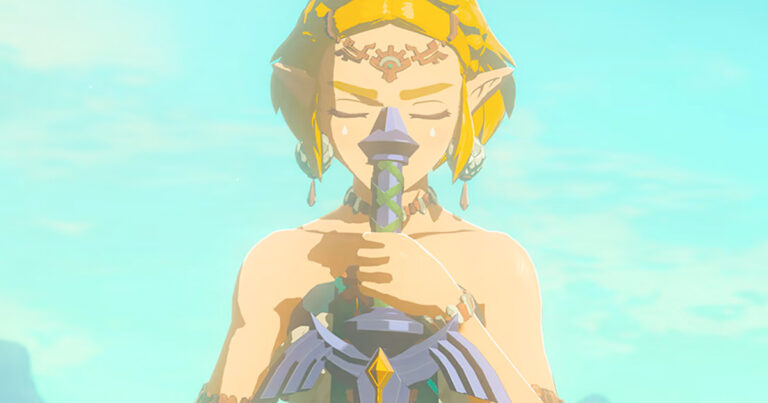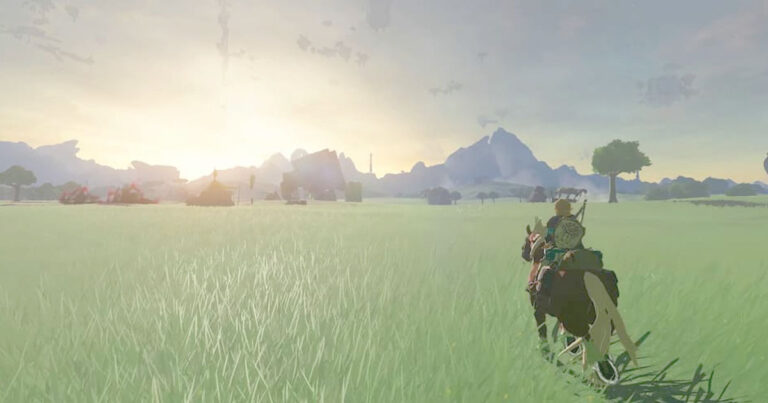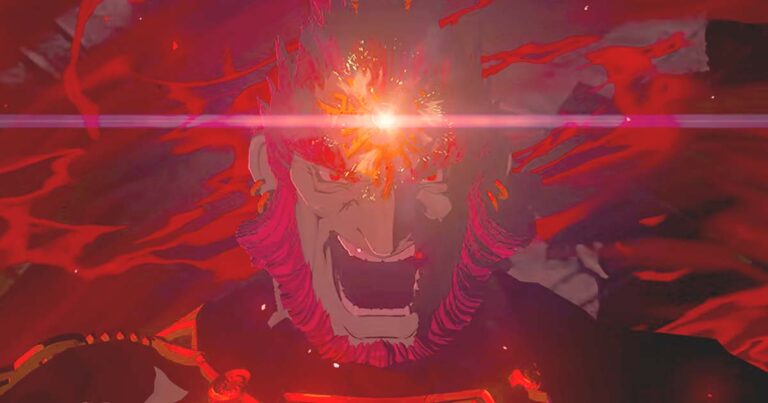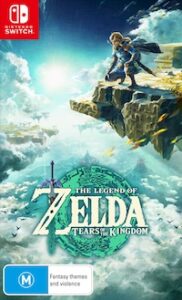Player agency and creativity are the wind beneath your wings in Tears of the Kingdom.
The Legend of Zelda: Tears of the Kingdom review: Gliding to glory
You’ve probably seen the insane creations possible in Tears of the Kingdom plastered all over your social media. Laser drones, bomber planes, and mechs that are so advanced they seem to obliterate a whole enemy camp with minimal effort.
Sometimes it's like we’re not even playing the same game.
Tears of the Kingdom is the latest instalment in Nintendo’s Legend of Zelda saga. A long-awaited follow-up to its predecessor, 2017’s Breath of the Wild, it follows the series’ protagonist, Link, as he embarks on a familiar quest to find and save Princess Zelda.
As you journey around the land of Hyrule, you enlist the help of various characters and abilities to help you along the way. More than the awesome scope of this adventure, the true beauty of Tears of the Kingdom lies in how it allows you to play to your own preferences.
You can spend your time foraging for various species of mushrooms and catching glow fish in the depths of Hyrule's many caves. Or you can build death machines hungry for destruction and plough down anything that dares to stand in your way. The best part is you can have both! Gallop the countryside on a noble quest to find Princess Zelda by day, and don the Podracer of destruction by night.
Tears of the Kingdom leans heavily on player agency, letting you make your own decisions, and engineer your own solutions to the problems in your path. Experimenting with Link’s abilities in different contexts and combinations isn’t just one aspect of the experience. It's the axis upon which everything else revolves. You can pick up and attach almost any object to another with Ultrahand, or use Fuse to merge existing weapons, shields and materials together to create new tools entirely.
You truly can be as creative as you like. If want to create a stairway to heaven using a stack of wooden boards instead of the Ascend ability, you can. If you want to establish dominance over enemies by defeating them with attack helicopters, tanks, mech robots, or a makeshift Trojan horse, you can. It's thrilling finding new ways to destroy and terrorise enemies with the material at your fingertips!
Your abilities are tools in a toolbox, and the only thing limiting what you can build is your imagination (plus how much patience you have to traverse the countryside looking for materials and Zonai dispensers, the structures that give you those materials).

You can get as much or as little out of the building, and abilities as you like. If it's not your scene and you're just here for the exploration and the narrative, then you don’t have to build expansive structures and find unforeseen ways of using the material at your fingertips. These are far from the only tools at your disposal, even if they are the ones that can be used most freely.
Like its precursor, Tears of the Kingdom is quite unique when it comes to weapon durability. After a certain number of hits, any weapon will eventually break. When your weapon begins to ominously glow red, you know time is nigh.
This dynamic can be challenging to get used to, especially if you’re a hoarder like me. Like a raven, goggling at the shiny, unused weapon in my inventory, I don’t want to even imagine breaking my favourite weapon. However, the amount of hits you can get out of a given weapon increases if you fuse it with another material, critter, or item in your inventory.
Certain combinations will even grant attack bonuses or elemental advantages. Fusing your weapon with other materials and experimenting with new combinations is the best way to increase your weapon’s lifespan, and can add serious offensive or defensive potential in the process. This is just another way Tears of the Kingdom puts you in charge and allows you to let your personal creativity shine.
The short-term lifespan of most weapons you put in your backpack means you need to get creative with how you’re going to use them, and what you fuse them with. Stick a Lizalfos tail on the top of your sword, and give your enemies a beating with an elemental twist. Instead of throwing an explosive fire fruit, chuck a piece of ruby on a claymore and swing fireballs at your enemies.
While it can be sad to bid a beloved weapon farewell, the endless fusing possibilities make it easy to fill that place in your heart with a weapon just as shiny and powerful as the one before it.

Exploration is Tears of the Kingdom’s lifeblood. Without it, you would not be able to encounter side quests, riveting NPCs, find and forage new plants or fruits, or conquer the countless amount of caves and shrines around Hyrule.
In the early game, you’ll traverse Hyrule looking for the Batman-esque signal emanating from the many towers littering the distant landscape around you. These Skyview Towers allow you to fast travel and unlock new portions of your map once encountered. If you don’t make the journey to a few notable towers, you’re going to have an incredibly difficult time trying to complete the game’s many major quests.
You’re rarely short of things to do, NPCs to see, or caves to visit in Tears of the Kingdom. The map is extensive, especially when you factor in the Sky Islands, located above the land of Hyrule, and the Depths that lurk below
The map and quest design are so entwined it's like a well-oiled engine. Each landmark you visit will encourage you to unlock surrounding shrines and strike up conversations with nearby NPCs in need of your help.
Every location Link goes, there is something to do. Interacting with a villager at a stable might lead you to a nearby lake or dungeon, for example. Again, whether you decide to go down this path, or continue on your own is your onus. While there is criticism that Tears of the Kingdom’s map is simply Breath of the Wild’s regurgitated, it's a direct sequel. You can expect it to look fairly similar.
But rather than an encore, Tears of the Kingdom plays and feels completely different. The introduction of the Sky Islands and the Depths is a big part of the reason why. Together, these additions give the map a heaven-versus-hell feeling that sets it apart from its Breath of the Wild counterpart.
The Sky Islands were marketed heavily as a core component of the game and are even part of the primary promotional image for the game itself. As a result, I did have some expectations for how substantial a role they would have in the game or main storyline. Perhaps a town, or some NPCs to talk to, or even just putting more emphasis on the islands for quest locations.
While the Sky Islands do contain some shrines and dispensers for collecting materials to make the mech of your dreams, I was honestly surprised at how little there was to do outside of the first island you traverse, the Great Sky Island. There aren't many quests or NPCs in the Depths either, but its huge map, quests, and mini-boss battles more than makeup for the lacklustre Sky Islands.
Experiencing just how eerie and spine-tingling the Depths are contrasted against compared to the heavenly feeling of gliding from the clouds to the lush green fields of the landscape below Hyrule was no doubt one of my favourite parts of Tears of the Kingdom.
Is The Legend of Zelda: Tears of the Kingdom worth buying?

Every time I talk about the brilliance of its predecessor, I end up wishing I could experience Breath of the Wild from scratch a second time over. Press start with fresh eyes and ears, having never heard the lively melody of the bongos in the Stables Theme, or the classical Japanese instruments in the Kakariko Village day song.
I got to experience this with Tears of the Kingdom.
The feeling of awe as Link stands atop a timber tree-laden island in the sky, and dives into a fish pond below. The uneasy, skin-tingling feeling you get when traversing the Depths, and seeing a Stalhorse for the first time.
Not only can you be as creative as you please, but you can do so at your own pace. You rarely run out of NPCs to visit, caves to explore, and quests to complete, and are always free to choose any path you like on the journey to saving Hyrule. You can do so much with the tools in your toolbox and can build an arsenal Ganon himself will marvel at.
With Tears of the Kingdom, Nintendo hands you the reigns and asks you to make the game your own. Even if you've saved Hyrule before, you haven't done it like this.
Related Articles





